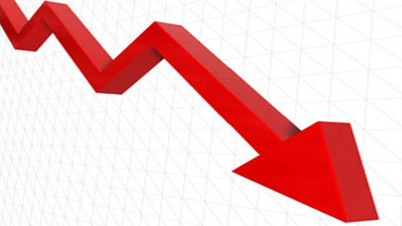
National Linear TV Ad Spend Has Declined Since 2015-16 Season, 2020-21 No Exception

National Linear TV ad spend peaked in the 2015-16 broadcast season (mid-October to mid-September) at $48.4 billion and, despite a slight year-over-year increase to $47.1 billion in 2017-18, has been on a long-term decline since, registering just $40.7 billion last year.
According to the Standard Media Index Fall TV Season Preview Report, which is based on actual spend data from SMI’s pool partners of major holding companies and large independent agencies representing some 90% of all U.S. ad spend, while the decrease was accelerated by the curtailing of production and scheduling brought about by COVID-19 lockdowns, the decline in linear TV ratings was already well underway.
With the declines, SMI says key dayparts all saw increases in effective, or delivered, CPMS (eCPMS), with broadcast primetime increasing 11% YOY in the 20/21 season to date to a leading $62. Broadcast latenight grew 22% to an eCPM of $40, with broadcast evening news growing 19% to $29.
In the 2020-21 season to date, broadcast evening news has been the only gainer in average paid unit cost (:30s) for national TV, growing to $44,1000 up 3% from the 2019-20 season and 7% from the 18/19 season. All other key markets declined, including broadcast primetime, down 14% YOY to $63,6000; broadcast early morning down 10% YOY to $18,4000; and broadcast latenight down 11% YOY to $17,100.
“While Covid certainly impacted Linear TV revenues, it served primarily to accelerate change that was already underway, driven in great part by migration of dollars to OTT,” says Rick Bruner, head of insights and analytics, SMI. “OTT has been on a monthly sustained upward trajectory since January of 2019. YTD in 2021, it has seen a 55% increase in ad revenue, compared to a 22% increase for all media and a 41% increase for digital.”
Additional findings from the analysis include:
- Based on fall 2021 SMI Forward Bookings, against a sample of flagship broadcast programs, Grey’s Anatomy (ABC) led upfront unit cost lift at +10%. Survivor (CBS) returns with strong +18% scatter lift, having last aired in May 2020 due to COVID era production challenges.
- Cable ad spend peaked in 2015-16 and 2017-18 reaching $27.4 billion in revenue each season, but falling in 2018-19 and again in 2019-20, when recorded spend was $23.5 billion.
- Following the 2019-20 season’s -30% pandemic disruption, sports investment normalized in the 2020-21 season-to-date period, attaining modest +2% lift vs. 2018-19 to $9.3 billion.
- Entertainment faced revenue erosion in consecutive years, with 2020-21 to date declining 17% vs the same 2018-19 period to $21.5 billion. Albeit lighter volume, news revenue represents a bright spot with back-to-back growth years, topping out at $3.9 billion in 2020-21, a 4% YOY increase.
- With the most revenue & audience stability, ABC eCPMs grew a leading +16% year-over-year. Only CW eCPMs diminished, as the only sample where revenue decline modestly outpaced audience decline.
































Comments (3)
#FutureOfTV.Live says:
October 13, 2021 at 5:50 pm
Hello team! there are a few typos in this article, I’d like to link to it form LInkedin but with the typos, not the best. Thanks. In the 2020-21 season to date, broadcast evening news has been the only gainer in average paid unit cost (:30s) for national TV, growing to $44,1000 up 3% from the 2019-20 season and 7% from the 18/19 season. All other key markets declined, including broadcast primetime, down 14% YOY to $63,6000; broadcast early morning down 10% YOY to $18,4000; and broadcast latenight down 11% YOY to $17,100.
whatnews??? says:
October 14, 2021 at 7:59 am
Local Broadcast TV..DOA
AIMTV says:
October 14, 2021 at 12:30 pm
OTT % are misleading. OTT growth is coming from a base of virtually zero $ just a scant few years ago. Linear broadcast TV is, on the other hand, a very mature business. Of course Covid 19 impacted OTT and Linear TV Viewing, to such a degree as I would say that no true conclusions can be drawn until we are truly firmly entrenched in a “post-covid” era. It will be interesting to see what 21-22 will reveal. Humans always make the mistake of predicting the future on past experiences even though the circumstances are rarely, if ever, comparable. As Joe Strummer of the Clash famously said “The future is unwritten.” So, one can bitterly surmise the future of local broadcast TV as “DOA” if they wish and pretend they are saying something useful or insightful. But best to do so under the predictable veil of anonymity… oh wait, they already did. Geez, that didn’t take long did it?